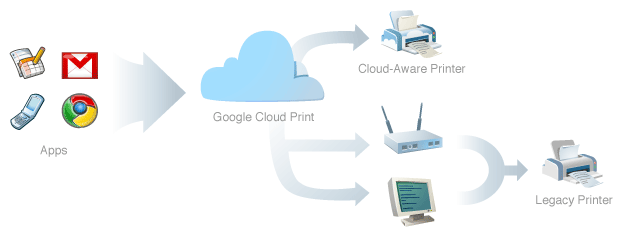Google Chrome increases printer voodoo

Google today revealed its plans for printing from within cloud-based Chrome OS, and every printer you have ever owned, used or sneered at from afar, has been rendered outmoded.

Google's cloud printing(Credit: Google)
The printing system is to be called Google Cloud Print, with the fundamental tenet to the system being that the print job will up to Google and before being sent onto the printer of the user's choice.
Although in embryonic stages, the print cloud will have certain advantages, such as being able to print to any printer anywhere in the world, and printing from mobile phones.
The problems with this solution are stark though.
First up there is the issue that every printer in existence today is placed in a "legacy printer" category, and will need a proxy to communicate with the print cloud; this means that a PC will need to be attached to a printer and the PC will always need to be turned on and connected to the internet in order to print.
Google intends to bundle this proxy with the Chrome browser and says that it wants to work with the industry to build native support into printers themselves. A third alternative for the proxy is to build it into items such as routers, removing the need for PCs-with-proxies to be attached to printers.
Or to put it another way: every printer is now outmoded and will need to use software that Google hasn't built yet.
Then there are also privacy issues of registering printers with Google and sending documents into a cloud for printing. Although if a user is running Chrome OS, I'll assume that they're comfortable with Google's privacy measures. Similarly, a Chrome OS user probably isn't going to lose any sleep over the concept of using bandwidth to upload a document to the print cloud in order to print locally to a printer within eyesight.
But there's also the question of security and what could be gained from intercepting print jobs.
The problem with this solution is that it seems too cute and thus over-engineered by half. There is the need for printing on Chrome OS, but is the correct solution to do away with everything that has gone before and make sure the baby goes with the bathwater?
I'll admit that much of interaction with printers appears to be voodoo, and successful printer operation seems to be inversely proportional to one's technical knowledge, but asking enterprises and users to register printers with Google and have an operating internet connection in order to print a document is not solving anything — it is making printing more difficult and adding yet more points of failure to an already frustrating system.